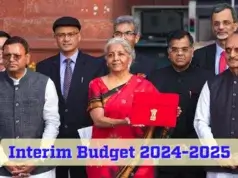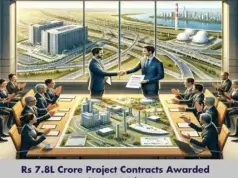 Whether it is glass, concrete or brick, today facades are being designed with a lot of care and study. Gone are the days when glass or colour determined the building design, writes Reza Kabul, Director, Reza Kabul Architects Pvt. Ltd.
Whether it is glass, concrete or brick, today facades are being designed with a lot of care and study. Gone are the days when glass or colour determined the building design, writes Reza Kabul, Director, Reza Kabul Architects Pvt. Ltd.
Architecture is always about projecting into the future. When we build, we shape not only the environment, but also our lives and the lives of future generations.
India has emerged as one of the fastest growing economies in the world which has led to immense growth in infrastructure development, and increasing emphasis on delivering world-class architecture has resulted in the development of new and innovative façade designs.
In India, the only option left is to now go vertical across all major cities and towns. The demand for not only curtain wall but also special energy efficient envelopes with a combination of special glass and double skin-and-rain screen facades is on the rise in various cities across India.
Why facades? It gives the building its identity.
In this time today, it’s not just about designing the creative best looking façade itself but designing with keeping in mind our future. The bigger challenge in terms of designing facades in India is our environment (dust, pollution etc); it’s all about using efficient facades that can provide insulation, energy saving and aesthetics.
Buildings around the world consume 40 per cent of primary energy and generate 33 per cent of carbon emissions. Consumption of heating energy could reduce up to 70 per cent through the use of effective thermal insulation. In our mixed used development project, Shreepati Garden, located in Parel, Mumbai, early studies have been done along with climate analysis and wind studies to improve the proficiency of the building life.
We can lengthen renovation cost cycle. Water is one of the greatest enemies of plaster and structures. Frequent driving rain, for example, not only damages plaster, but the moisture can also penetrate through plasters into the building fabric and trigger mildew formation. By proper choice of materials and paints we can lower the water absorption, get outstanding resistance resulting in cost effective and high durability façade.
In our residential project, Zephyr, located in Bandra, Mumbai, considerations are taken for the quality and durability of the materials to ensure comfort of living.
 We can achieve zero emissions. We need to use the paint which contains low-VOC paints that have no solvent or plasticizer content, but combine high resistance to dirt pick-up and good weathering properties with an excellent price/performance ratio resulting in healthy living.
We can achieve zero emissions. We need to use the paint which contains low-VOC paints that have no solvent or plasticizer content, but combine high resistance to dirt pick-up and good weathering properties with an excellent price/performance ratio resulting in healthy living.
Until recently most of building facades in India were of traditional construction and glass usage in building was limited to glazed windows constructed along with conventional exterior concrete/brick envelope. Architectural glass was used mainly for day lighting internal spaces without other technical requirements and thus it was considered as commodity product. The trend has slowly changed to cope with modern architectural designs and an awareness of building design and energy consumption. As a result, there is increasing focus on glass selection and in high performance glasses.
Improved availability has been a factor with wide range, bigger sizes available, increased local production, ease of imported glass and reduced lead time. These have driven current trend and added flexibility. Owners are showing strong commitment to deliver advance design with increased budgets to achieve their aims. This has also caused owners to start looking for more ways to differentiate their development in the highly competitive business.
Therefore, more developments have started to go with unique iconic buildings where facades play a major role to achieve their desire. The advancement of façade glazing on these projects includes: complex glazing system, difficult façade geometry, more functional requirements, green building requirements an ecologically sustainable design.
In our next project, complex glazing system has been used for Dheeraj Corporate Park. The façade used optimisation techniques to arrive at an optimal arrangement of glazing and blinds to refine the design and to maximise its thermal comfort performance while minimising construction and operating costs.
In our next project, Reliance Guest House, we have considered the green building requirements to ensure good building design for the people and the environment.
The Indian glazing industry is developing at a phenomenal rate which increased construction activities and an aspiration for better quality. Current trends are improving the industry with upcoming large scale and complex projects, some of them with unique designed facades as well, but in terms of output quality and technical expertise available in India are limited and this creates some capacity problems. Therefore, the local industry, at all stages of the project, from post-processing through to implementation, is required to sharpen its technique, adequate investment on facilities, and improve expertise and quality to face these challenging projects.
Whether it is glass, concrete or brick, today facades are being designed with a lot of care and study. Gone are the days when glass or actual colour determined the building design. Today, sun path analysis is done to ensure selection of right type of glazing. Spandrel panels are designed in such a way to avoid glare. In some cases sun-breakers are integrated into the façade to cut out the heat and allow diffused light to pass through the glass. Double-skin façade can also be seen in a few projects. Parametric facades, LED facades, rain screen facades are in some buildings already.
A façade is a signature of the building owner, architect or developer. We have to create a demand by educating people about our modern facade systems for healthy and better living










